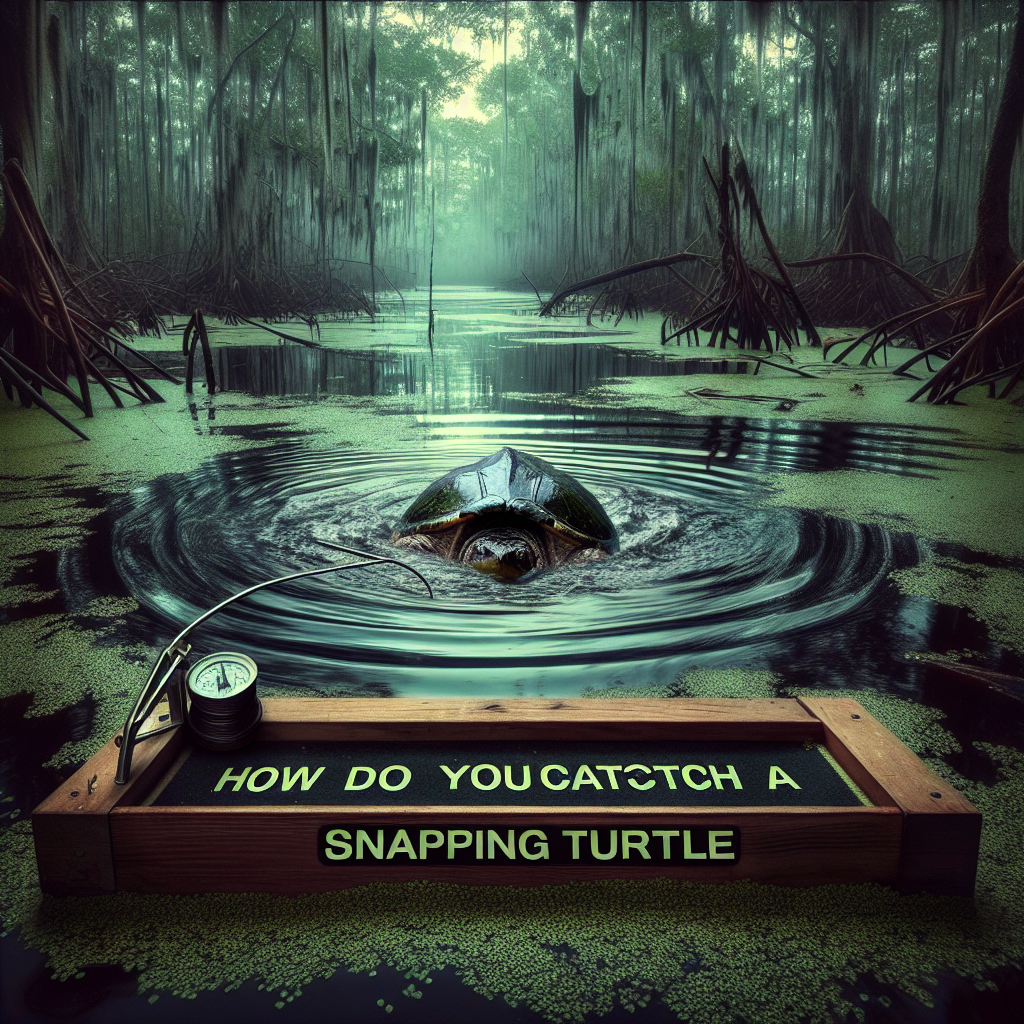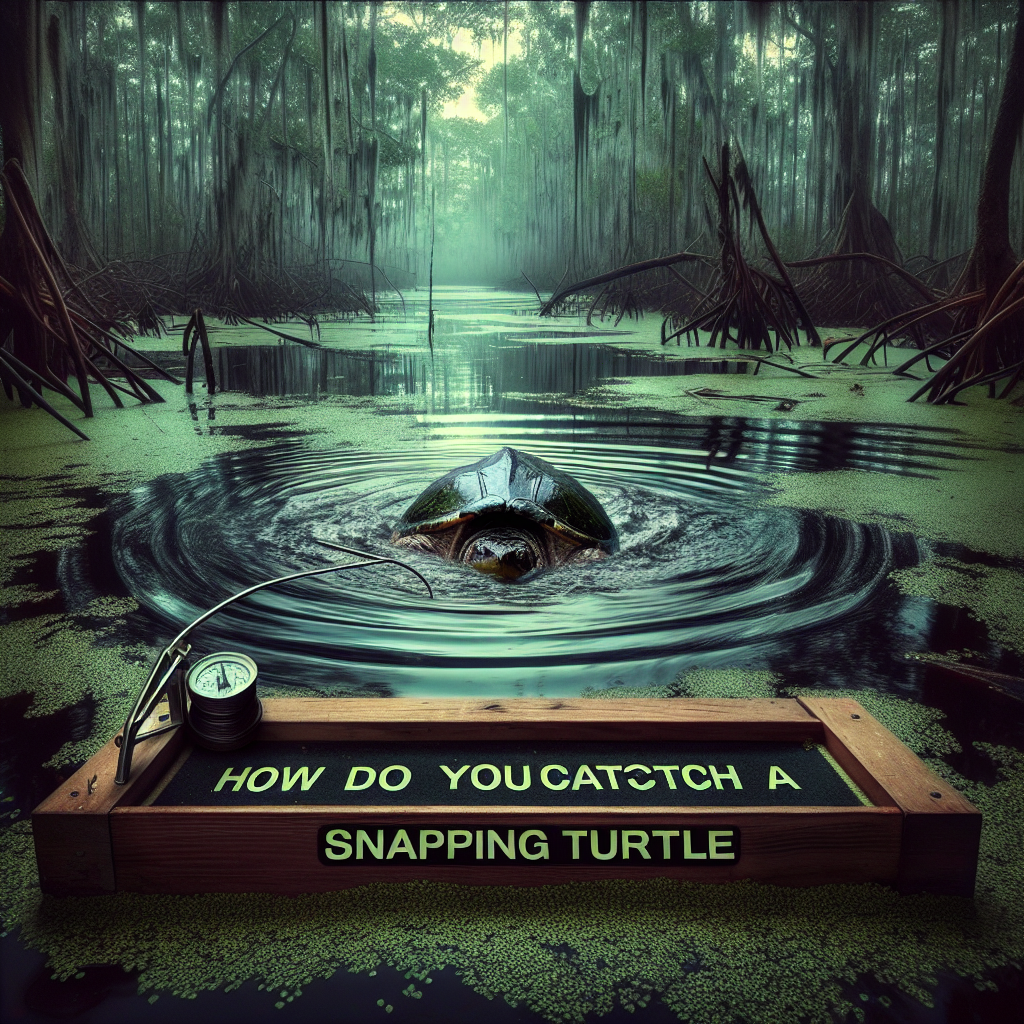So you’ve found yourself faced with the challenge of catching a snapping turtle, but you’re not quite sure how to go about it. Well, fear not! In this article, we’ll explore some simple and effective techniques that will help you safely and successfully capture a snapping turtle. Whether you’re a curious observer or need to relocate the turtle for its own safety, we’ve got you covered. Get ready to learn some valuable tips that will make the process a breeze.
How Do You Catch a Snapping Turtle

Assessing the Environment
Before attempting to catch a snapping turtle, it’s essential to assess the environment. Start by identifying suitable habitats where snapping turtles are known to inhabit. These turtles are commonly found in bodies of water with muddy bottoms and plenty of vegetation. They prefer wetlands, ponds, lakes, and slow-moving streams. Additionally, it’s crucial to check the legal requirements in your area for snapping turtle capture, as regulations may vary. Finally, consider the seasonal factors that impact snapping turtle movement, as they tend to migrate during certain times of the year.
Gathering the Proper Equipment
To catch a snapping turtle safely and effectively, it’s important to gather the proper equipment. Start by selecting sturdy gloves and protective clothing to minimize the risk of bites or scratches. Since snapping turtles have powerful jaws, it’s crucial to acquire strong fishing line and hooks to handle their weight and strength. For trapping purposes, heavy-duty snapping turtle traps are recommended. It’s also important to prepare a snapping turtle holding container to keep them secure during transportation. Lastly, collect a long-handled net or snare pole for capturing turtles in water.
Understanding the Behavior of Snapping Turtles
Having knowledge about snapping turtles’ behavior is vital for a successful capture. Familiarize yourself with their aggressive and fierce nature. These turtles have a reputation for their powerful bite and defensive behavior, making it crucial to exercise caution and respect when approaching them. Furthermore, understanding their common habitats and movement patterns will help you locate and anticipate their presence. Additionally, learn about their feeding habits and what types of bait are more enticing to them. Finally, educate yourself on the breeding and nesting behavior of snapping turtles.
Practicing Safety and Precautions
When dealing with snapping turtles, safety should always be a top priority. Wearing protective gear, such as thick gloves and sturdy clothing, is essential to minimize the risk of pelvic bites and scratches. Exercise caution and handle snapping turtles with care to prevent injury to yourself or the turtle. It’s also important to take measures to avoid infections when handling them, as they can carry bacteria. Lastly, preventing the spread of diseases should be a significant concern, so be mindful of proper hygiene and disinfection protocols.

Baiting Techniques for Snapping Turtles
Choosing the right bait is crucial when attempting to catch snapping turtles. Fresh fish or meat, such as chicken liver or beef liver, are highly effective baits. The strong odor and natural appeal of these baits attract snapping turtles from a distance. Additionally, employing decoy eggs or baby turtles as lures can entice snapping turtles to approach and investigate further. It’s also worth considering alternative attractants, such as live bait or strong-smelling substances, to increase the chances of catching these elusive creatures.
Using Traps to Catch Snapping Turtles
Using traps is a common method for capturing snapping turtles safely and efficiently. Setting up a rectangular snapping turtle trap on land is an effective approach. These traps typically consist of wire mesh or PVC pipes, allowing the turtle to enter but not escape. Constructing a funnel trap for snapping turtles in water is another option, using a cone-shaped trap with bait at the narrow entrance. Additionally, installing a catfish trap can be an effective way to capture snapping turtles, as they often take advantage of these traps to scavenge for food. Regularly checking and disposing of captured snapping turtles is crucial to maintain the traps’ efficiency.
Hand-Catching Snapping Turtles
Hand-catching snapping turtles requires skill, caution, and confidence. When approaching a snapping turtle from behind, ensure you have a secure grip on its shell before attempting to lift it. Grabbing them by the shell near the base of the tail provides better control. It’s important to handle snapping turtles with exceptional care, avoiding unnecessary stress or harm to the turtle. After capturing a snapping turtle, it’s necessary to release it properly to avoid injury. By being gentle and allowing the turtle to return to its habitat swiftly, you can ensure a safe and respectful release.
Netting Methods for Snapping Turtles
Netting is another effective technique for catching snapping turtles, particularly in water. Scooping them with a landing net is a common method, which involves submerging the net under the turtle and swiftly lifting them out of the water. Using a hand net is another option, especially for smaller snapping turtles. This method requires carefully maneuvering the net around the turtle without causing distress. Alternatively, setting up a snapping turtle trap with a fishing net can yield successful results. The net should be attached to the trap, and the bait strategically placed to lure the turtle inside.
Approaching Snapping Turtles in Water
When approaching snapping turtles in the water, it’s essential to be cautious. Gradually and calmly approach from the edge, minimizing any sudden movements that may startle the turtle. Keep in mind that snapping turtles are excellent swimmers and can move quickly in water, so be prepared for their agility. Using a long-handled net or snare pole can be advantageous, allowing you to reach the turtle without entering the water personally. By maintaining a respectful distance and avoiding any aggressive behavior, you can increase the chances of capturing the turtle successfully.
Releasing or Relocating Snapping Turtles
After capturing a snapping turtle, it’s important to consider the appropriate course of action for its release or relocation. Identifying suitable release or relocation locations is necessary to ensure the turtle’s survival and well-being. Look for suitable habitats that closely resemble its natural environment, such as nearby bodies of water or wetlands. When handling snapping turtles for release, always prioritize their safety and avoid causing any injury or trauma. Releasing snapping turtles with minimal disruption to ecosystems is crucial to maintain the delicate balance of the environment.
In conclusion, catching a snapping turtle requires careful assessment of the environment, gathering the proper equipment, understanding their behavior, and practicing safety precautions. Baiting techniques, traps, hand-catching, and netting methods can all be employed to successfully capture snapping turtles. However, it is essential to handle them with care, release or relocate them responsibly, and prioritize their safety and the preservation of their habitats. With the right knowledge and approach, you can successfully catch and handle snapping turtles while respecting their role in our ecosystems.
